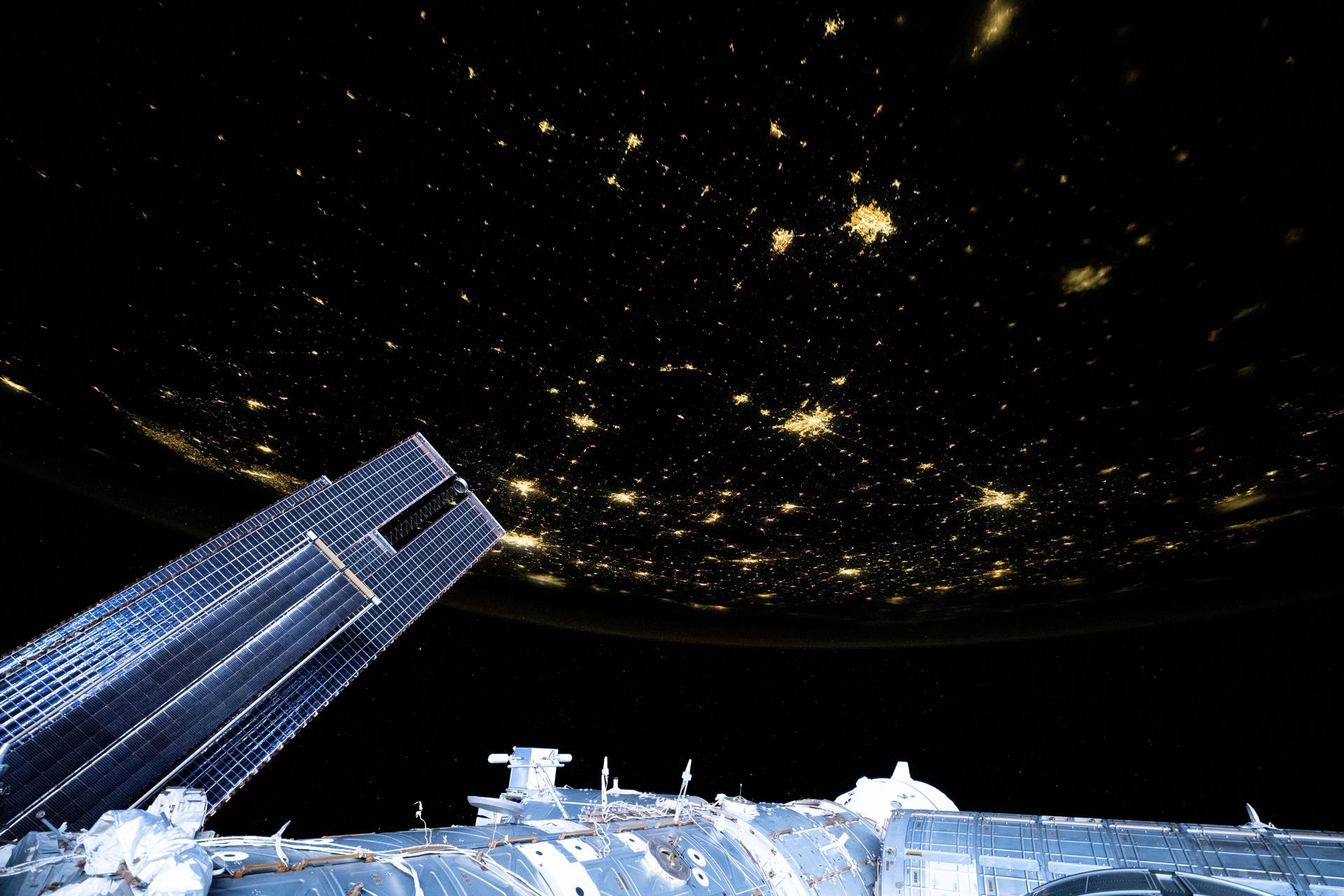Science Maintenance and Window Inspections Kick Off Week

Science maintenance supporting physics research gear and window inspections kicked off the beginning of the week for the seven-member Expedition 73 crew living and working aboard the International Space Station. Meanwhile, NASA, Axiom Space, and SpaceX are reviewing launch opportunities no earlier than Thursday, June 19, for the fourth private astronaut mission to the International Space Station, Axiom Mission 4.
A fluid physics study on the orbital outpost is testing computer models that may predict the behavior of high-concentration protein fluids in microgravity. NASA Flight Engineer Nichole Ayers swapped syringes containing protein samples and installed test cells inside the Microgravity Science Glovebox. The hydrodynamics investigation explores using surface tension to contain liquids and study proteins without contacting solid walls. Results may benefit pharmaceutical manufacturing and 3D printing techniques on and off the Earth.
NASA Flight Engineer Jonny Kim began his shift opening up the Materials Science Laboratory (MSL) and removing a sample cartridge from the physics research rack. The MSL located, in the Destiny laboratory module, uses two different furnaces operating one at a time to discover new applications for existing materials, such as metals, alloys, polymers, and new or improved materials. Kim later installed tags throughout the station testing their use for a radio frequency identification system that may improve inventory management in space.
NASA Flight Engineer Anne McClain started her day with a cognition test to understand how her brain function and structure is adapting to weightlessness. Next, she jogged on a treadmill as a heart rate monitor measured her cardiac activity. At the end of her shift, McClain inspected and photographed the condition of windows inside Destiny.
Station Commander Takuya Onishi from JAXA (Japan Aerospace Exploration Agency) also inspected and cleaned windows spending his day inside the Kibo laboratory module. He first opened up Kibo’s multipurpose small payload rack where the Electrostatic Levitation Furnace is located and cleaned glass windows on the research device’s sample cartridges. The ELF uses containerless processing techniques to observe the thermophysical properties of material samples exposed to high temperatures in microgravity. Next, he inspected and photographed the condition of Kibo’s internal and external windowpanes during nighttime orbital passes for clearer imagery.
Roscosmos Flight Engineers Sergey Ryzhikov and Alexey Zubritsky joined each other at the beginning of their shift attaching acoustic sensors to their necks measuring the sound as they exhaled rapidly for a respiratory study. The duo then split up and inventoried hardware and searched for extra stowage space inside the Zvezda service module. Flight Engineer Kirill Peskov spent his day servicing a variety of computer hardware and life support gear before pointing his camera toward Earth and photographing the mountainous area of North America near the Pacific coast.
Learn more about station activities by following the space station blog, @space_station and @ISS_Research on X, as well as the ISS Facebook and ISS Instagram accounts.
Get the latest from NASA delivered every week. Subscribe here.
























